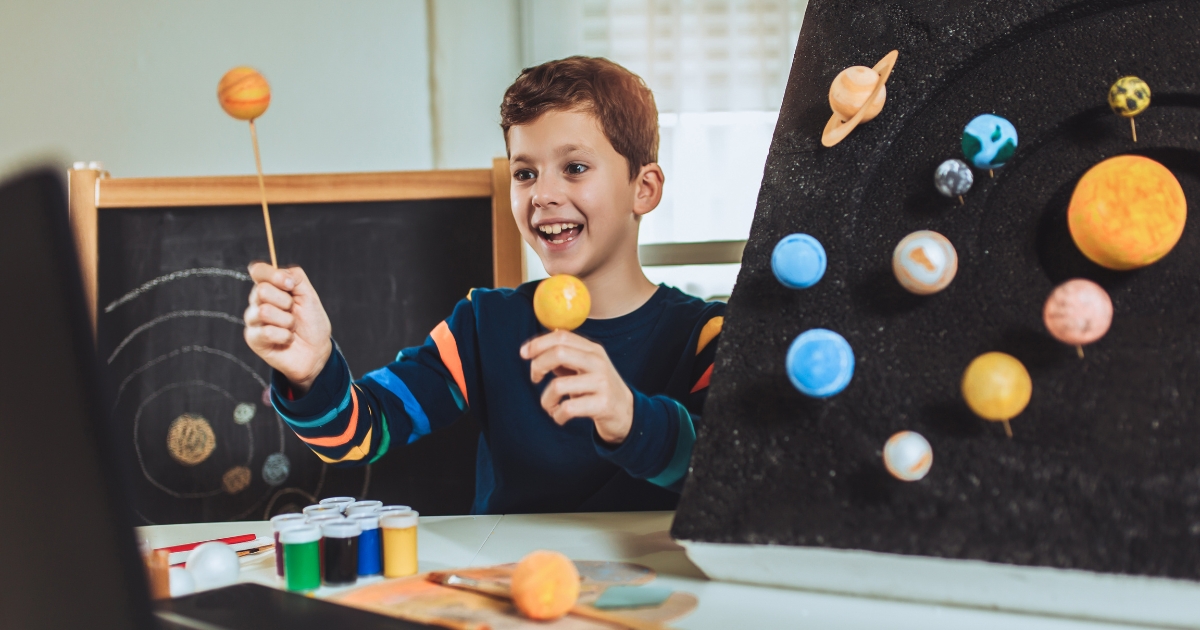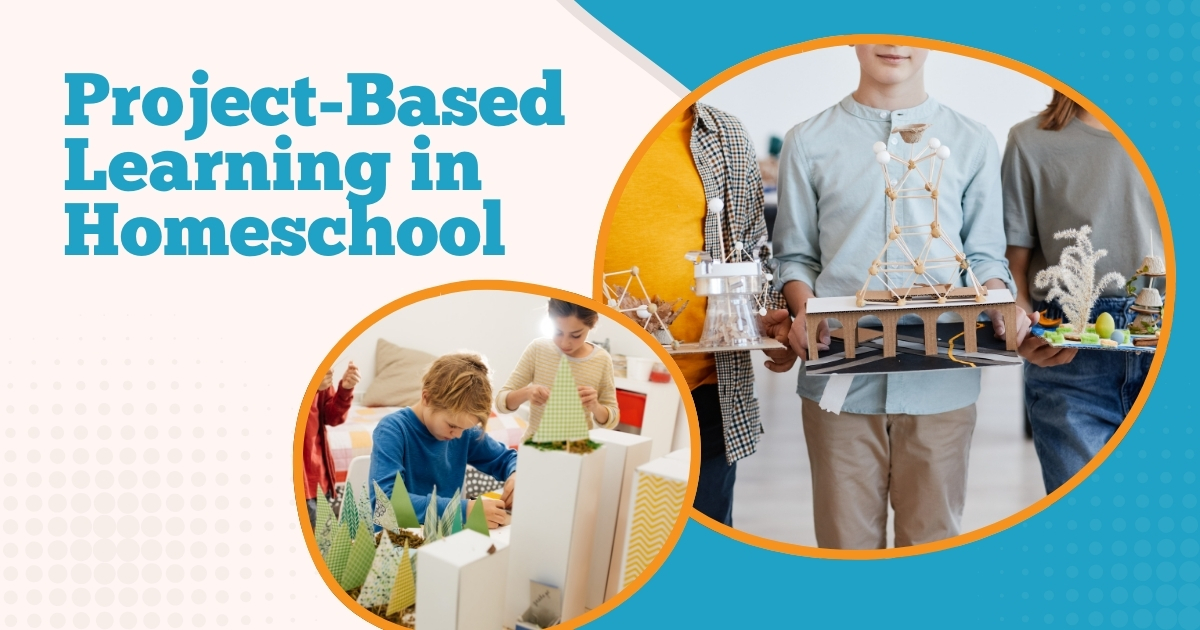Teaching your children at home offers both flexibility and the chance to make learning more relevant and engaging. One approach that takes full advantage of these opportunities is project-based learning. This method focuses on hands-on, experiential learning where students tackle real-world questions, problems, or challenges through projects. Unlike traditional methods, project-based learning allows children to immerse themselves in topics, build critical skills, and retain knowledge more effectively.
Project-based learning (PBL) is an educational approach where the primary focus is on projects rather than lectures or worksheets. These projects are often student-led and based on real-world problems or questions. For instance, instead of a lesson about ecosystems, your child could create a model of a local ecosystem, complete with research and experiments about its flora and fauna.
This method works particularly well for homeschoolers because it integrates naturally into a flexible, home-centered lifestyle. Children can explore their own interests in depth, whether it’s science, history, math, or art.
Benefits Of Project-Based Learning In Homeschool
- Builds Real-World Skills
PBL encourages not only academic knowledge but also essential life skills. When children investigate and create, they improve their ability to problem-solve, think critically, and collaborate effectively.
- Critical Thinking
Tackling complex problems helps children evaluate information, come up with creative solutions, and think outside the box. - Teamwork and Communication
Depending on your homeschool setup, this can involve group projects with siblings, cooperative homeschool groups, or virtual partners. These opportunities foster strong communication skills and prepare students for real-world scenarios. - Time Management
Long-term projects require planning, breaking tasks into smaller steps, and meeting deadlines.
- Personalizes Learning
One major advantage of homeschooling is that you can tailor lessons to fit your child’s individual needs and interests. Project-based learning takes this a step further because your child doesn’t just follow a curriculum—they help create it. For example:
- If your child loves baking, you can integrate math (measuring ingredients), science (chemical reactions), and even history (the origins of their favorite dessert) into a project about baking cakes from scratch.
- A child fascinated by the stars could research constellations, design a star chart, and build their own telescope.
This kind of personalized learning not only builds a deeper connection to the topic but also boosts your child’s motivation and engagement.

- Encourages Hands-On Learning for Homeschoolers
Hands-on activities are at the heart of project-based learning. They give children the chance to learn by doing, which reinforces concepts more effectively than passive learning methods like reading or lectures.
- Building models and prototypes enhances understanding of engineering and design concepts.
- Conducting experiments helps children engage with scientific principles in a concrete way.
- Creating art projects or writing plays brings creative writing and history lessons to life.
The tactile, active nature of hands-on learning helps ideas “stick” better and enables lifelong skills to develop naturally.
- Improves Retention of Knowledge
Children retain information longer when they actively engage with it. Studies show that experiential learning methods like PBL help students remember concepts because they’re directly applying them rather than simply memorizing facts.
For instance, if your child learns geometry while working on a project to build a bookshelf from scratch, the math principles they use will be much harder to forget.
- Makes Learning Meaningful
Another benefit of PBL is its real-world relevance. It answers the common question all kids ask at some point, “Why do I need to know this?” By framing skills and knowledge in practical, real-world terms, project-based learning helps children see the value in what they’re studying.
For example, a project on growing a vegetable garden can naturally cover science (photosynthesis), math (plot spacing and seed quantity), and responsibility (watering and maintenance). These are not just academic lessons but skills your child could apply for years to come.
How To Incorporate Project-Based Learning At Home
- Start Small
You don’t need to overhaul your curriculum all at once. Start with one subject or unit and design a simple project that aligns with your learning goals. For example, if you’re teaching geography, have your child create a travel brochure about a country they’re interested in. - Follow Your Child’s Interests
Before deciding on a project, ask your child what sparks their curiosity. By aligning projects with their natural interests, you will foster greater engagement. - Set Clear Goals
Ensure each project has defined learning objectives. While it’s great to allow kids some freedom in their projects, they also need clear parameters to stay focused. - Provide Resources and Guidance
Offer supportive resources such as books, videos, or tools that will help your child succeed. Act as a guide to keep them on track, but allow them to take the lead. - Encourage Reflection
Once a project is complete, have your child reflect on what they’ve learned. This could be through a presentation, a journal entry, or even a family discussion. Reflection helps solidify lessons and encourages metacognition.
Examples of Project-Based Learning Activities for Homeschooling
To spark some inspiration, here are project examples across different subjects:
- Science
- Build and test a working volcano model.
- Design and launch a small rocket while exploring physics concepts.
- Create a compost bin and track what decomposes over time.
- Math
- Plan a family budget or shopping list using real prices and calculations.
- Design an amusement park layout and calculate the area and perimeter of each ride.
- Measure and build a birdhouse using geometry skills.
- History
- Research and recreate an ancient artifact or costume.
- Make a diorama of a historic event.
- Write and perform a play based on a famous historical figure.
- Art and Literature
- Design book covers for stories your child has written.
- Paint a mural or large-scale illustration based on a chapter book.
- Create your own short film or stop-motion animation.
- Practical Life Skills
- Build a small vegetable or herb garden.
- Research pet care and prepare to adopt a family pet.
- Cook international meals while learning about world cultures.
Benefits of Experiential Learning at Home
Experiential learning reinforces the idea that children learn best by doing. This alignment with how real learning naturally takes place sets a foundation for lifelong curiosity and skills. For homeschoolers, it’s an approach that seamlessly integrates education with everyday life.
Imagine your child learning geometry while they measure and cut fabric for sewing or exploring biology while they care for a family pet. These activities don’t just impart academic knowledge; they teach responsibility, critical thinking, and practical application. By engaging multiple senses and contexts, experiential learning helps children understand the “why” behind their lessons, which is far more powerful than memorizing facts.
It’s About Process, Not Perfection
One of the most important things to remember about project-based learning is that it’s not about getting everything perfect. The process is where the real learning happens. Whether the project turns out exactly as planned or becomes an unexpected experiment in problem-solving, your child is gaining valuable experience.
Allow room for trial and error. Celebrate creative solutions and resourcefulness. By fostering this mindset, you’ll cultivate confidence in your child and reinforce the understanding that learning is a lifelong, evolving process.
Giving Project-Based Learning A Try
If you’re ready to give project-based learning in homeschool a try, start with something manageable and fun. Choose a topic your child is already curious about, set clear steps, and provide the tools and encouragement they need.
The beauty of homeschooling is that you can adapt as you go. With time, you’ll find it easier to weave larger, multi-disciplinary projects into your curriculum, giving your child the chance to explore, create, and grow in ways that traditional methods can’t always offer. Whether through building, experimenting, or researching, project-based learning brings education to life, one hands-on project at a time.





